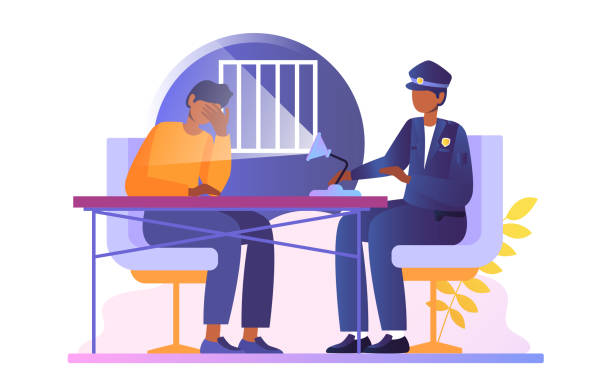Direct Evidence: Definition, Law and Examples

What is direct evidence?
Chances are you’ve heard the word “evidence” a lot. Perhaps you have found yourself engrossed in a police television drama. Or maybe you’ve served on a jury. Regardless of your familiarity with the criminal justice system, you may be surprised to learn that not all forms of evidence are created equal.
The term direct evidence refers to any piece of evidence that stands alone to prove a claim. In other words, it provides direct proof of a fact and does not require any kind of inference. Eyewitness testimony is the most common form of direct evidence likely to be presented in a criminal trial. When a witness recounts something that he directly observed or experienced, he is offering direct evidence of an event.
Circumstantial evidence , on the other hand, is a set of facts that, when taken together, lead to a desired conclusion. Unlike direct evidence, circumstantial evidence is not isolated; requires the use of logical reasoning to prove a fact. Forensic evidence , such as a blood spatter pattern on a wall, is a good example of circumstantial evidence; it requires the use of deductive reasoning to connect a suspect to a crime, because evidence alone proves nothing.
Sometimes witnesses offer testimony that serves as circumstantial evidence of a fact. An example of this would be a witness who saw a suspect flee the scene of a crime. Although the witness did not actually see a crime being committed, their testimony can be used to create an inference that the suspect was involved in a crime.
Consider the following example that illustrates the difference between direct and circumstantial evidence. A hunter is taking a walk in the snowy forest. When he reaches a clearing, he watches as a rabbit bumps into a hollow log. A second hunter enters the clearing and asks the first hunter if a rabbit has passed. The hunter’s observation, the rabbit bumping into the log, is an example of direct evidence.
Now let’s say that the first hunter, upon reaching the clearing, does not see the rabbit, but does see rabbit tracks leading to the log. When the second hunter appears and asks if a rabbit has passed, the first hunter can only provide circumstantial evidence of the rabbit (the tracks) rather than direct evidence (seeing the rabbit in person).
Laws Governing the Use of Direct Evidence
Like most laws, the rules governing the use of direct evidence vary by jurisdiction. A common rule is that evidence must be relevant before it can be used in a trial. This means that the evidence must be related to the case at trial.
Many states require that certain forms of direct evidence, such as the actual contract signed in a contract dispute, must be properly authenticated before they can be shown to the jury. In other words, there must be some proof that the evidence is really what the person admitting the evidence says it is. This is easier than you think. Usually, all that authentication requires is the testimony of a witness to attest that the evidence is authentic.
Almost all states prohibit the use of direct evidence of other crimes or wrongdoing against a defendant. This is known as evidence of character. Character tests are generally inadmissible as evidence that the defendant is simply criminally prone.
With direct evidence, especially eyewitness testimony, it is often necessary to show that the witness is reliable or credible. This may require asking a series of questions to show that the witness is prone to truthfulness. Physical limitations, such as poor eyesight, can be used against the witness to discredit her testimony.
Examples in the courtroom
As mentioned earlier in the lesson, the most common form of direct evidence is eyewitness testimony. Consider the following not-so-true story: Carl Criminal is on trial for attempted murder. The prosecutor calls Wanda Witness to the stand. Wanda explains that she was walking her dog around 11 p.m. when she heard screams coming from a nearby alley.
As Wanda poked her head around the corner to look down the alley, she noticed a tall, one-legged man pointing a small pistol at a man wearing a red baseball cap. Startled, she turned and ran. Wanda testified that she heard the sound of a gunshot when she reached the street corner. What part of Wanda’s testimony is direct evidence?
Wanda’s testimony that she saw the one-legged man pointing a gun at the man in the red baseball cap is direct evidence. What Wanda saw does not require any level of inference to make sense to a jury. Carl, who only has one leg, is easily implicated in this scenario; there is direct evidence that he, or someone who looked very much like him, pulled a gun on the man in the hat.
What about Wanda’s testimony about the sound of the gunshot? Is that direct evidence? Because Wanda did not directly observe the one-legged man firing the gun, the testimony that she heard the sound of a gunshot is circumstantial evidence. While it is strong evidence against Carl, it is not proof that she shot the man. A second gunman could have appeared after Wanda walked away, for example. The jury must use logical reasoning and deduction to connect the sound of the shot to Wanda’s observation of the man with one leg holding the gun.
lesson summary
Direct evidence is direct proof of a fact that does not require any kind of inference for its understanding. Direct evidence differs from circumstantial evidence , which requires the use of deduction and reasoning to connect a set of facts to reach a conclusion. In the context of criminal law, the most common form of direct evidence is eyewitness testimony, although there are many examples of direct evidence. A party attempting to admit direct evidence must adhere to the strict evidentiary laws in any given jurisdiction.